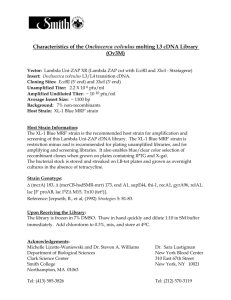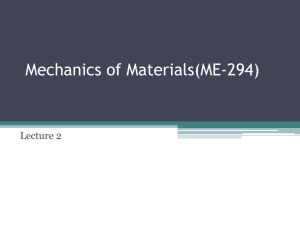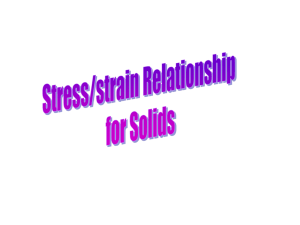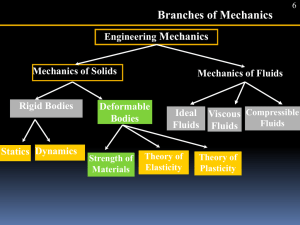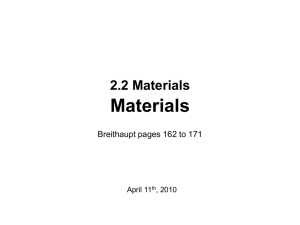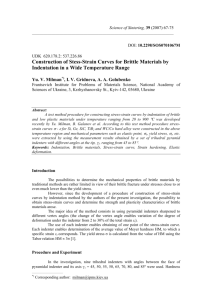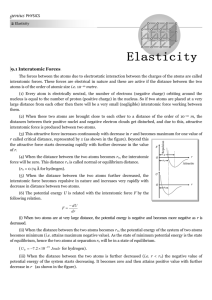MENG 363 Manufacturing Processes , Assignment 1. Max score: [2+
advertisement
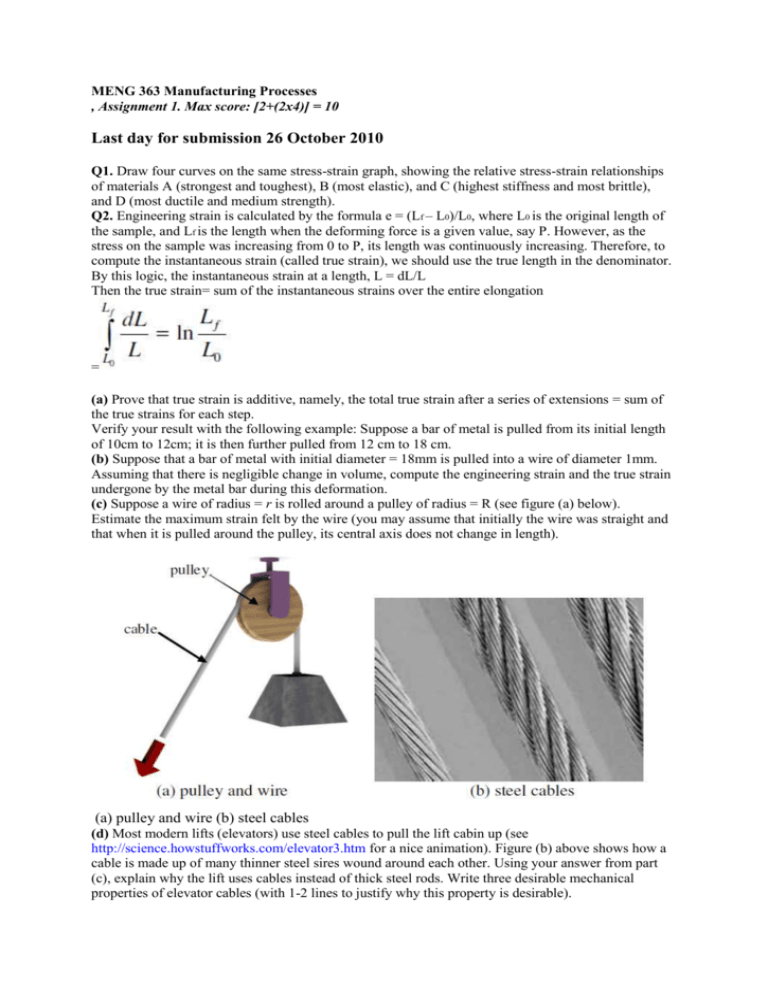
MENG 363 Manufacturing Processes , Assignment 1. Max score: [2+(2x4)] = 10 Last day for submission 26 October 2010 Q1. Draw four curves on the same stress-strain graph, showing the relative stress-strain relationships of materials A (strongest and toughest), B (most elastic), and C (highest stiffness and most brittle), and D (most ductile and medium strength). Q2. Engineering strain is calculated by the formula e = (Lf – L0)/L0, where L0 is the original length of the sample, and Lf is the length when the deforming force is a given value, say P. However, as the stress on the sample was increasing from 0 to P, its length was continuously increasing. Therefore, to compute the instantaneous strain (called true strain), we should use the true length in the denominator. By this logic, the instantaneous strain at a length, L = dL/L Then the true strain= sum of the instantaneous strains over the entire elongation = (a) Prove that true strain is additive, namely, the total true strain after a series of extensions = sum of the true strains for each step. Verify your result with the following example: Suppose a bar of metal is pulled from its initial length of 10cm to 12cm; it is then further pulled from 12 cm to 18 cm. (b) Suppose that a bar of metal with initial diameter = 18mm is pulled into a wire of diameter 1mm. Assuming that there is negligible change in volume, compute the engineering strain and the true strain undergone by the metal bar during this deformation. (c) Suppose a wire of radius = r is rolled around a pulley of radius = R (see figure (a) below). Estimate the maximum strain felt by the wire (you may assume that initially the wire was straight and that when it is pulled around the pulley, its central axis does not change in length). (a) pulley and wire (b) steel cables (d) Most modern lifts (elevators) use steel cables to pull the lift cabin up (see http://science.howstuffworks.com/elevator3.htm for a nice animation). Figure (b) above shows how a cable is made up of many thinner steel sires wound around each other. Using your answer from part (c), explain why the lift uses cables instead of thick steel rods. Write three desirable mechanical properties of elevator cables (with 1-2 lines to justify why this property is desirable).





